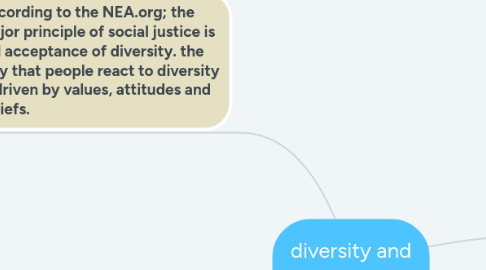diversity and inclusion
by linda mathew


1. Beliefs, values and attitudes are about how people react to diversity. In order to understand this, we need to look into ourselves and our behaviors toward others that are different. For instance, children tend to treat another student that has a different skin color than their own by making assumptions about where they are from. Their assumptions toward others skin color are a reflection of their family values, attitudes and belief system. Teachers can counteract that by educating the children about other ethnicities, their values, beliefs and language they speak and what part of the world their family comes from.
2. According to the NEA.org; the major principle of social justice is full acceptance of diversity. the way that people react to diversity is driven by values, attitudes and beliefs.
3. diversity in teaching is working with different ethnities, lgbtq communities, and genders.
3.1. inclusion in teaching is treating each student as a whole individual. also including various backgrounds of family groups.
4. personal experiences
4.1. teaching and working with middle school
4.1.1. speech assistant working with them to tailor their speeches and attending speech meets and grading them for their individuality, effort and subject.
4.2. treating them as individuals with different styles of acting out and performing.
4.2.1. respect of various content whether it was dramatic, cleverness of impomptu or focus on a particular subject.
